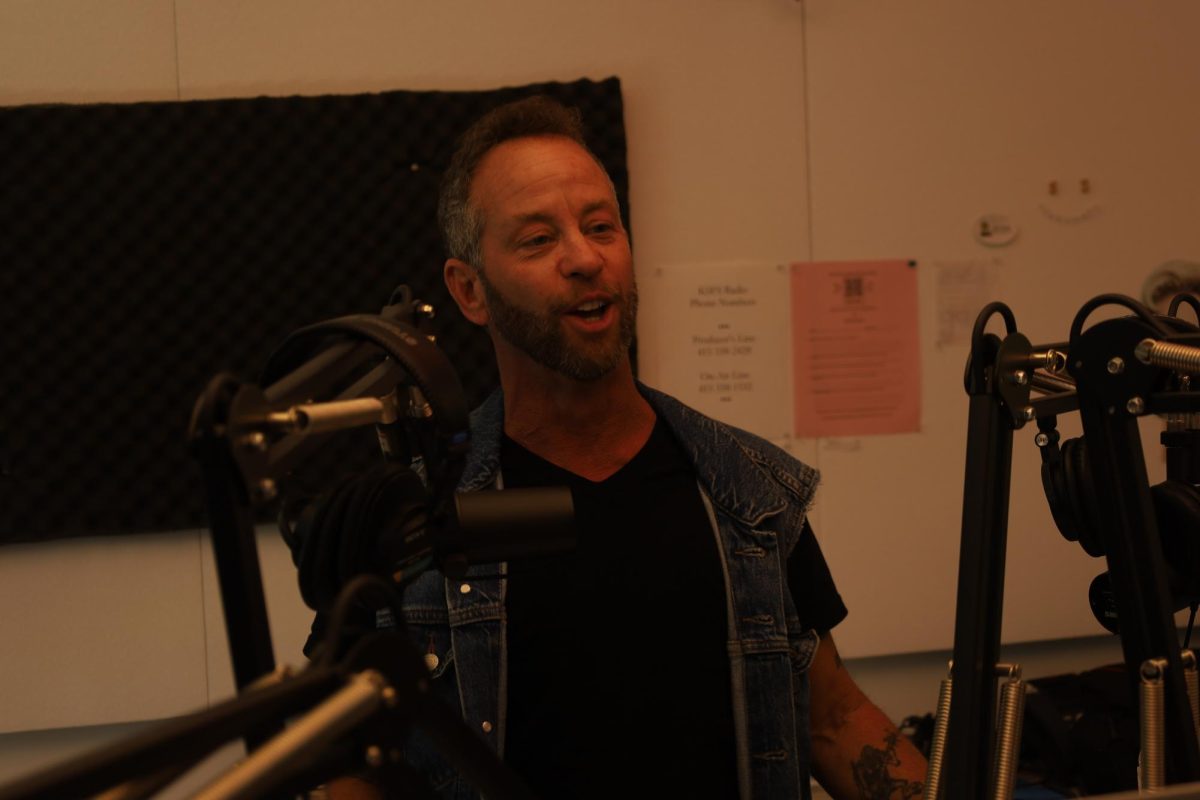The University Police Department was on high alert in July as a group of robbers roamed SF State’s campus in broad daylight grabbing valuables from students walking alone.
On July 11 at 6:10 p.m., an SF State student walking through campus noticed two men on a red, pocket bike-style motorcycle in front of the library. As she kept walking, they rode up from behind her and ripped a bag off her shoulder.
A similar robbery happened just eight days later. On July 19 at 11:45 a.m., a robber ripped a student’s phone from her hands as she was walking by the Humanities Building on Tapia Drive. The thief then jumped into an awaiting car and peeled away.
UPD Chief Jason Wu said the robbers also targeted other areas of the city — including Golden Gate Park and City College — and were caught by San Francisco Police the same day the cell phone was stolen. Wu was unable to provide details of the arrest location, charges or suspect identities by press time.
Such incidents are “unusual” on campus, Wu said, but they’re a reminder that people need to be alert and aware of their surroundings. “The person was talking on the phone,” he said. “So obviously that’s how distracted a person can be.”
According to SF State’s 2017 Annual Security Report, crimes on campus and in residences nearly doubled from 58 reports in 2013 to 120 reports in 2016.
[infogram id=”san-francisco-state-university-crime-statistics-2013-2016-1h0r6rkl8ej84ek?live”]
But the UPD doesn’t associate the spike in numbers with an increase in crime, but rather to an improvement in the way the data is gathered after a UPD committee was created in 2015 to review compliance with the Clery Act.
The Clery Act, signed in 1990, is a federal law requiring universities and colleges to disclose information on crimes in and around campuses.
SEX CRIME REPORTS ON THE RISE
Rapes and sexual assaults were the second only to burglaries as the most common type of crime reported. There were 32 such reports in 2016 — up from 16 in 2014.
But do these statistics indicate a rash of rapes on campus?
Probably not, according to Gene Chelberg, associate vice president for student affairs and enrollment management. The spike may be due to heightened awareness through SF State’s online training programs for incoming students, and through the media with the rise of the #MeToo movement.
“I don’t think it’s because San Francisco State has gotten worse,” he said. “We would like to think it’s because people know where to go for complaints.”
Faculty and staff also have to take online awareness training around Title IX rights, which has caused complaints to “go through the roof,” Chelberg said.
Signed in 1972, Title IX is a civil rights law that bans sexual discrimination when accessing educational programs and activities. In 2010, Harvard Law School and Princeton University came under federal investigation for violating Title IX in their handling of sexual assaults on campus. Since then, Title IX has also meant freedom from sexual assault in educational institutions.
Whether or not sex crimes on the rise at SF State, a variety of university departments are working on addressing the issue.
At the UPD, the focus is on teaching women to avoid being victims through its community liaison unit’s Rape Aggression Defense Training, or RAD.
“It’s not a prevention program. It’s about empowerment and self-awareness,” Wu said. “A lot of this is about personal responsibility 360 – both boys and girls.”
It seems that girls are plenty aware of the potential for sexual attacks. Second-year nursing student Yomara Sanchez, 19, said her social media feeds routinely bring up fears around sex trafficking.
“A lot of girls are sharing their stories that people have come up to them [off campus] and tried to take them. Or they’ve realized that it’s almost happened to them,” Sanchez said. “I feel like that’s honestly scary because being out here, you’re by yourself, especially going to work.”
Transfer student Annie Oakland is also very aware of threats to her safety, and she made sure that SF State had measures in place to protect her. The 22-year-old from Sacramento asked questions about lighting and nighttime escorts when she took a campus tour. Learning that everyone had to take the online Title IX training was welcome news.
“I was really happy about all of those being in place here,” she said. “It made me feel safer.”
First-year child development student Yasmin Flores, 17, said that since she’s from a “sketchy” neighborhood in SoCal, she’s savvy about safety and being aware of her surroundings. She added that she’s felt “really safe” on campus ever since arriving a week ago.
So what about boys?
The university’s Health Promotion and Wellness office is dedicated to educating the campus’s male population about toxic masculinity, destructive gender norms and rape culture to create a more positive view of masculinity, said Karen Boyce, director of health promotion and wellness.
“The goal of that is really an opportunity for male-identified students here on campus to take a leadership role in shifting the norms about masculinity,” Boyce said. “Addressing the rape culture and rape mythology – sort of that ‘blaming the victim’ kind of thing – and to shift it onto men on campus who take the leadership and responsibility to say, ‘This is what being a man is all about. It’s not about these destructive ideas about masculinity that lead to rape or sexual assault.’”
The Student Affairs and Health and Wellness departments are also introducing bystander training that they hope will lead to a peer-to-peer domino effect of education, so eventually, everyone on campus will feel empowered to intervene if they witness an inappropriate, uncomfortable or threatening situation.
“So it’s not blaming the victim,” Chelberg said. “It’s putting the focus on the potential perpetrator and saying, ‘Stop it. Knock it off. I see you.’”
BURGLARIES TOP THE LIST
The most often reported crimes by far are burglaries from residences and automobiles with 53 reported incidents in 2016. Here again, Wu said, students can avoid being targeted by being more aware.
“In almost all incidents, [residential burglaries] have been unattended property within open windows,” he said.
Since the presence of uniforms is a good deterrent for criminals, Wu said, UPD patrols the campus as well as residences. Unsworn, unarmed uniformed community officers also perform foot patrols around residential areas.
Although the UPD will occasionally use plainclothes law enforcement. “The best way to ensure campus safety is for everyone to play a role,” Wu said. “We can have 30,000 plainclothes folks out and about. If you see something, say something.”
The Associated Students formed a committee on student safety late last year, and will work with the UPD to address crime on campus, said president Juan Carlos Hernandez.
“As a part of fighting crime, there’s not much that we as students can do besides work on these committees with the university,” he said.
The increase in crime that Hernandez has noticed involved increased tolerance of violence, abuse of free speech and hate speech directed towards minorities or historically underprivileged groups.
“I see that as the culture that America is in right now because of our leadership and the way our society is right now.”






